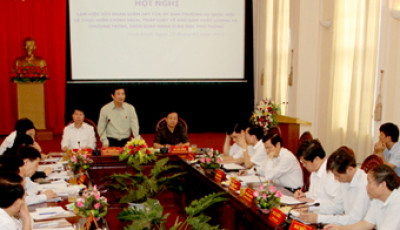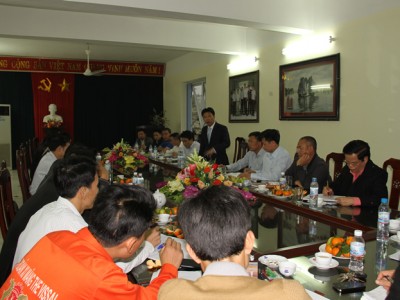“To rescue” Dong Banh Cement is not easy but not difficult for the Vissai
An official answer to the future of Dong Banh Cement is open because if accepted, the pioneer bearing debts for this project must handle many outstanding problems.
Recently, Vietnam’s Ministry of Construction submitted a written request to the Prime Minister for considering and approving share assignment of Construction Machinery Corporation (Coma) in Dong Banh Cement Joint Stock Company (Lang Son) to Hoang Phat Vissai Group Company Ltd (The Vissai – Ninh Binh).

Specifically, the Ministry of Construction requested Coma to assign over 17,114 million shares (equivalent to more than VND 171.14 billion at face value) from Dong Banh Cement and requested the Prime Minister to approve the Vissai’s fulfilling debt payment obligation on behalf of Coma for loans guaranteed by the Ministry of Finance under the Credit Contract signed between Dong Banh Cement Joint Stock Company and ANZ Bank with its value of about USD 3.4 million.
If the above mentioned proposal is accepted by the Government, Dong Banh Cement Project which is deep in debts of VND 1.3 billion shall have an opportunity to be rescued. Answering a reporter of Investment Review, Mr. Hoang Manh Truong, Chairman of the Vissai Group’s Board of Directors, shared that if everything is good with permission of the Government, all things may not be going smoothly. This The Vissai feels the best doubtful if taking over Dong Banh Cement is financial complexity of the Project.
The Vissai’s doubt has basis because according to results of checking cement projects using loans guaranteed by the Ministry of Finance, besides weakness in operation, production, market development and construction investment, Dong Banh Cement used over VND 160 million from the project’s investment capital to lend for wrong purposes. It is worthy to say that this lending was done upon the Company was lacking capital for production – business and must borrow loans, even must use other resources to pay due investment loans.
It is excluded that upon investment approval, the owner’s equity under the financial plan was VND 301 billion, but the investment owner mobilized a lack of over VND 95 billion. In addition, the Project lacked main source of materials for cement production (stone pit), and bought stone with high price and unstable quality and supply source. These shortcomings was concluded by the Inspection Team of the Ministry of Finance because project approval was impractical, investment capital was used for wrong purpose and these violations were of responsibility of General Director of Dong Banh Cement Joint Stock Company in 2008 – 2011 and Coma, in capacity as a unit having controlling shares and loans.
As one of the large cement producers owning 5 cement plants with total capacity of 6 million tons/ year, the Vissai has been considered to be a potential investor with stable consumption market for domestic and export purposes. However, fund-raising up to VND 171 billion in the context that purchasing power on the cement market is lower is a great challenge. A representative of the Group also admitted this and said that The Vissai would take optimal measures to raise funds from many sources and handle this problem the most effectively.
When the Vissai had intention to hold over 17,114 million shares in Dong Banh Cement and pay foreign loans guaranteed by the Government, a representative of ANZ Bank (which lent Dong Banh loans) directly worked with the Group and wished to “push up taking-over of Dong Banh Cement”.
Being one of 5 top extremely difficult cement projects due to ineffective operations and insolvency, Dong Banh Cement must be restructured urgently. In this situation, the Vissai’s intention to own a part of the Dong Banh Cement and pay debts on behalf of the old debtor was considered to be a brave action by the Cement Association.
Regarding Dong Banh Cement Joint Stock Company, Mr. Vu Van Nam, Chairman of its Board of Directors, told that the Company really expected the Vissai to rescue and pay debts on behalf of the Company as well as inject capital into productions and output.

































